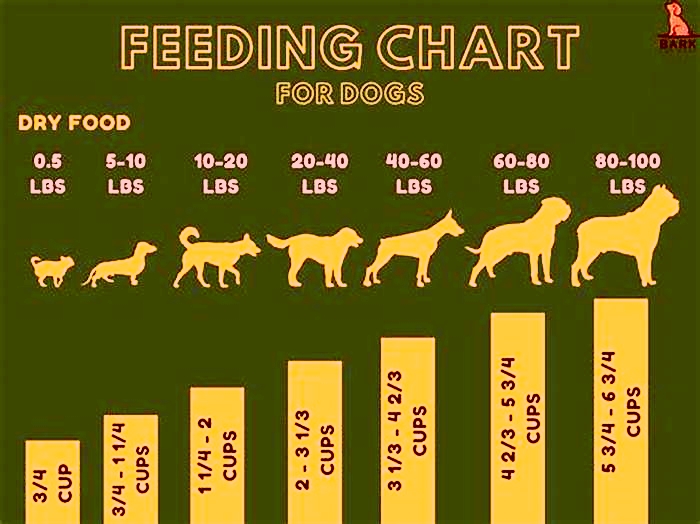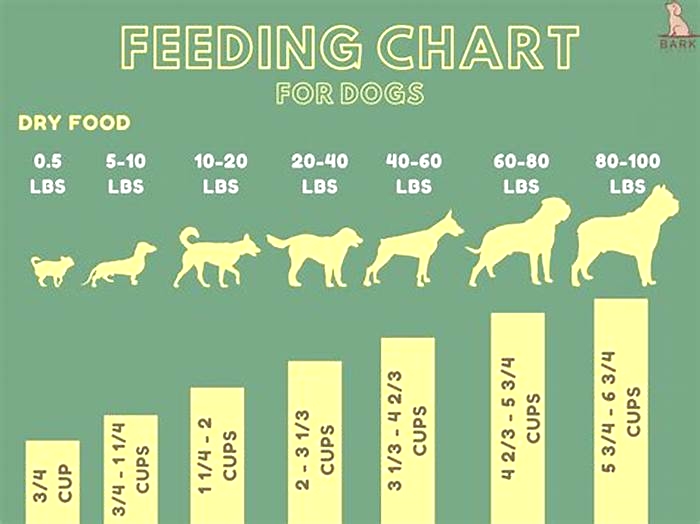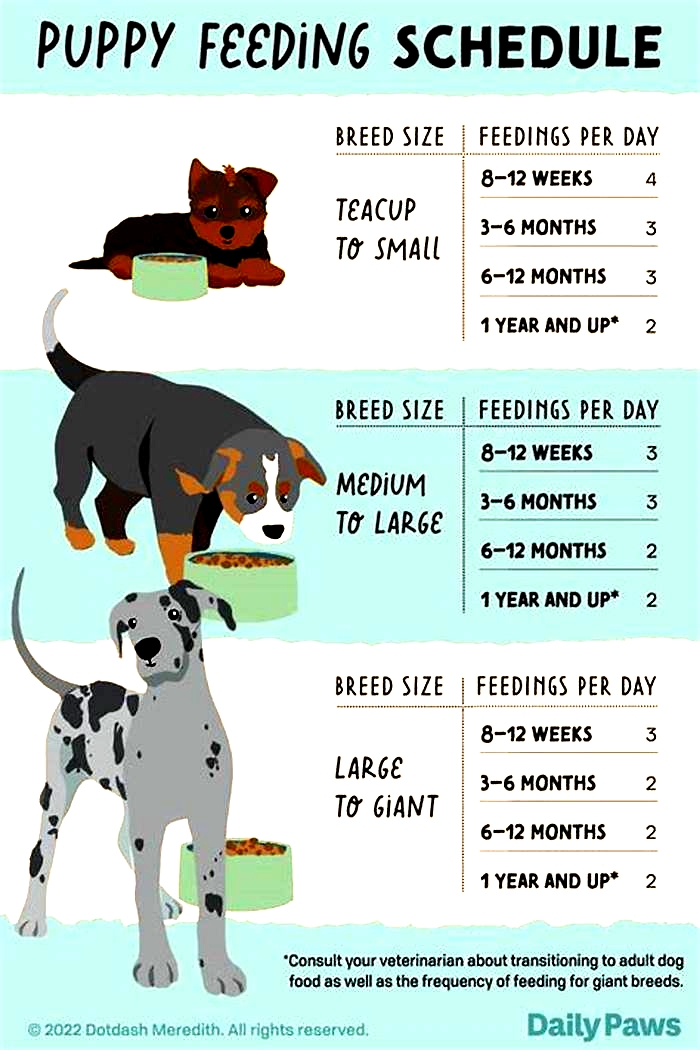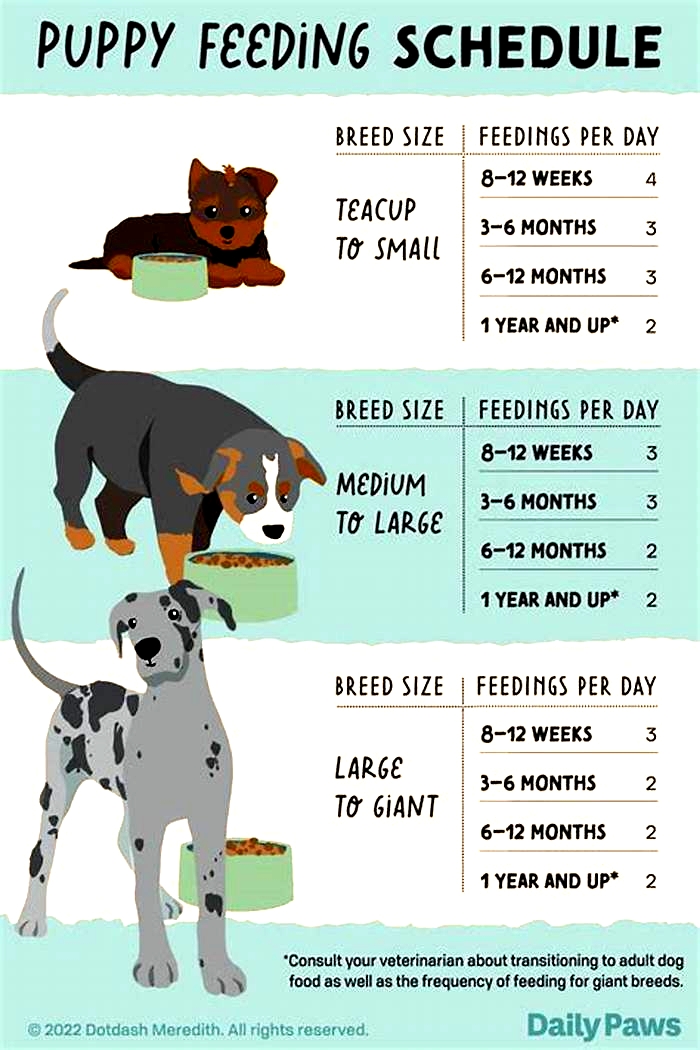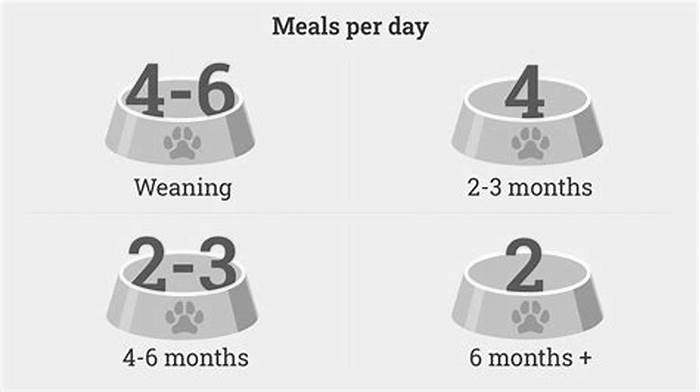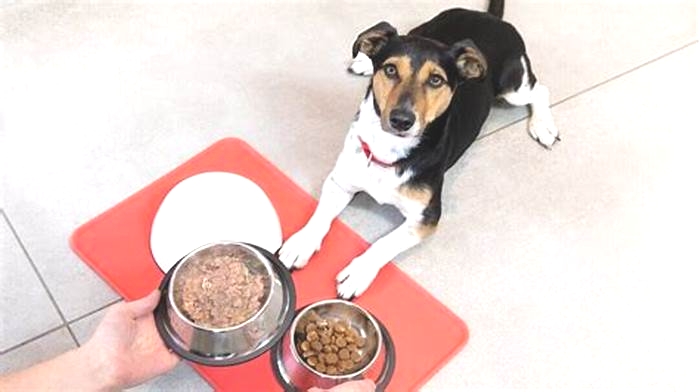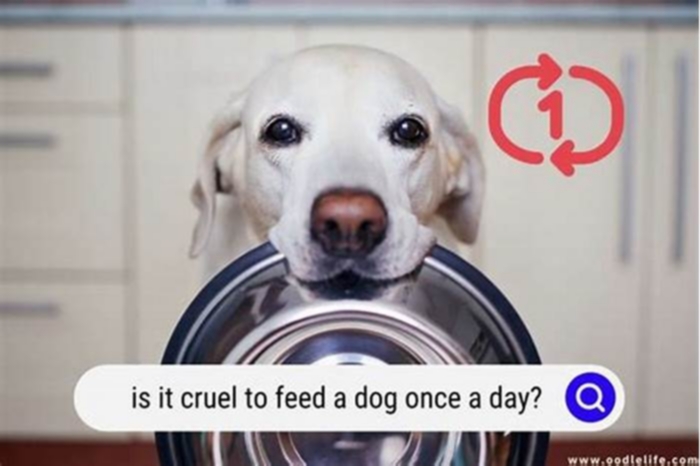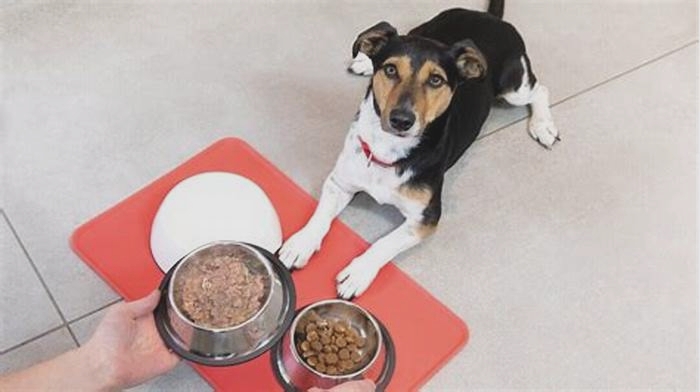How many times should you feed your dog
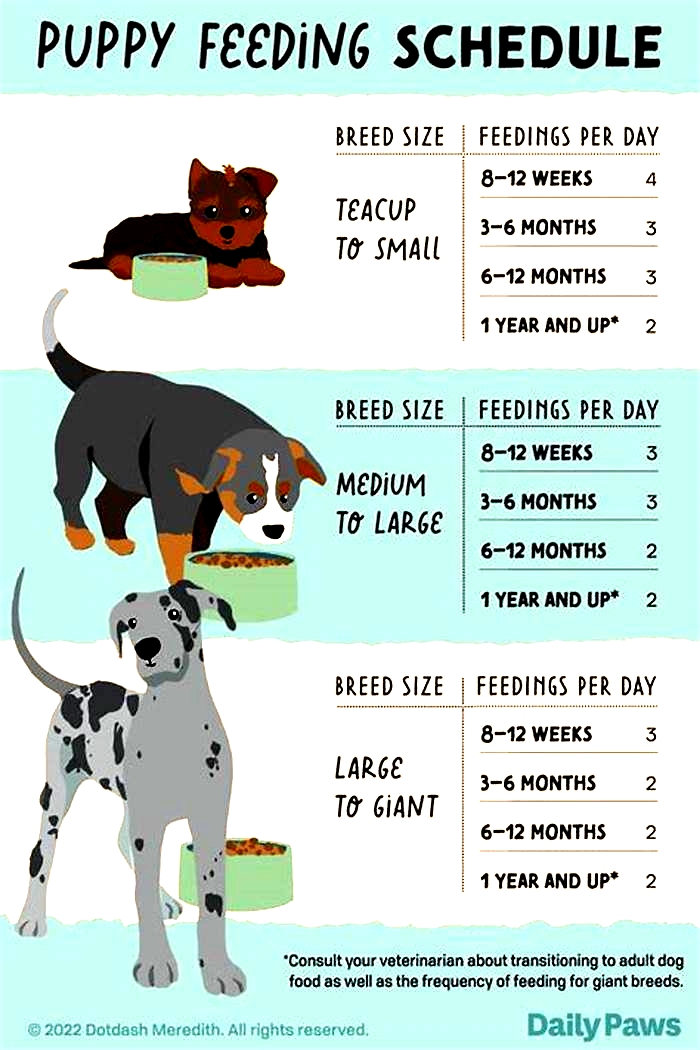
What is the Best Time of Day to Feed your Dog? (According To The Experts)
Article Last Updated April, 2024
Key Takeaways
- Regular meal times are crucial for your dogs digestion, energy, and overall well-being.
- Free feeding can lead to overeating and weight gain; regular meals help maintain a healthy weight.
- Proper feeding goes beyond nutrition; its a vital part of caring for your dogs overall well-being.
Hello, dog lovers! As dog parents, we always aim to keep our four-legged mates happy, healthy, and well-fed. But what time should your dog eat?
Feeding is more than just putting kibble in a bowl. Its about understanding their nutritional needs, age, health, and lifestyle.
Why does this matter? Feeding your dog at the right time impacts its health and behaviour.
Regular feeding can maintain a healthy weight, support digestion, and promote better behaviour.
In this article, we delve into canine nutrition, guided by experts, to uncover optimal feeding times. Well explore the best times, the pros and cons of feeding once or twice a day, and puppy feeding requirements and provide a sample feeding schedule.
So, grab a cuppa, get comfy, and lets journey into canine nutrition. Its time to optimise feeding time for your dog.
The Best Time to Feed Your Dog
While theres no one-size-fits-all answer to the best time to feed your dog, most experts agree on a few general GUIDELINES.
Typically, most adult dogs should be fed twice daily, with meals ideally spaced 10-12 hours apart to support their digestion and keep ENERGY LEVELS consistent. This could mean serving their morning meal early, around 7 am, and dinner early in the evening, at approximately 6 pm.
However, remember that every dog is unique, and their feeding times might vary based on age, health, and lifestyle. Ensuring your dog has a consistent feeding schedule is more IMPORTANT than the specified time meals are given.
Tailoring the feeding schedule to your dogs specific needs will help them stay happy and HEALTHY. Always remember consistency is key when it comes to meal times.
Feeding Your Dog Once a Day
Adopting a once-a-day feeding schedule for your dog can be a PRACTICAL solution for some. The convenience it offers can fit seamlessly into a hectic routine.
Moreover, some argue that a single daily meal aligns more naturally with a dogs instinctive feeding habits in the wild, where they would feast when food is available.
However, its key to note that this approach isnt ideal for all dogs, especially smaller breeds. Smaller dogs have faster metabolisms and, therefore, may require more FREQUENT MEALS to sustain their energy levels throughout the day.
On the other hand, larger dogs often have slower metabolic rates and might be content with one WELL-BALANCED meal a day [1].
Pro Tip: If you feed your dog once a day, its best to give them their meal in the morning as it provides fuel for the whole day and prevents overeating at night.
Feeding Your Dog Twice a Day
Many vets recommend feeding an adult dog twice a day, as this routine can offer several BENEFITS to your pets health and well-being.
A twice-daily feeding schedule helps maintain STABLE BLOOD SUGAR levels and provides a steady energy supply, keeping your dog active and content throughout the day.
This practice is backed by research. A study by The National Institute of Health showed that dogs fed once a day were more likely to GAIN WEIGHT. In contrast, those fed twice daily had stable body weights throughout the research period and lower calorie consumption overall [2].
Twice-daily feeding can help reduce bad behaviour due to boredom and hunger and prevent them from binging on food when given the opportunity.
How Often Should You Feed A Puppy
Feeding your puppy properly is key to their GROWTH and development.
Up until 8 weeks, puppies should primarily feed on their mothers milk. Its important not to adopt a puppy before this age, as premature weaning can lead to behavioural problems later in life.
From 6-8 weeks, puppies can start having SMALL PORTIONS of dry food four times a day alongside their mothers milk. As they grow, their diet needs to change too.
By the time theyre 2-3 months old, puppies should be weaned off their mothers milk and be on 3-4 solid meals a day.
The exact number of servings of dog food will depend on the BREED of the dog, with smaller breeds often requiring different feeding schedules than larger ones.
As your pup matures and becomes accustomed to solid foods, you can adjust its feeding schedule.
At 3-6 months, you can reduce the number of feeds to three times daily.
By the time theyre 6 12 months old, this can be gradually REDUCED to two meals a day.
Choosing the right food for your puppy is crucial to this process. For detailed information on the best foods to support your puppys growth, be sure to check out our article on the best puppy food.
Pro Tip: Remember, not all breeds are classed as adult dogs at the same rate. So, its essential to tailor the feeding schedule to the specific needs of your breed.
How Often Should You Feed Senior Dogs
Feeding our senior dogs is a bit like fine-tuning a beloved instrument. As our furry friends age, their activity levels decrease, and their metabolism slows down, affecting their dietary needs.
Many vets suggest sticking to a twice-a-day feeding routine for our golden oldies. Smaller, more FREQUENT MEALS can be easier on their tummies and help keep their blood sugar levels steady.
But, just as each wrinkle tells its own tale, each senior dog has UNIQUE health considerations.
Keep a watchful eye on your dogs weight and overall condition as they age because our senior companions might be more susceptible to weight changes.
Pro Tip: Ensure your senior dog eats in a calming environment to reduce stress and encourage them to finish their meal.
What Is Free Feeding?
Free feeding, you ask? Its a bit like a buffet for dogs, where their food is available all day to nibble at their leisure.
Sounds pretty convenient, doesnt it?
Especially for those of us with erratic schedules, this feeding method seems like a TIME-SAVER.
However, before you start filling up that food dish to the brim, lets delve a little deeper.
Free feeding, while appearing convenient, can often lead to OVEREATING and weight gain in many dogs.
A study published in the Journal of Veterinary Internal Medicine found a link between free feeding and obesity in dogs, mainly because its challenging to monitor their calorie intake [3].
Each dog is a unique character with individual nutritional needs. Free feeding doesnt consider these, and it can be especially risky for dogs prone to weight issues or those with specific dietary needs.
A Dogs Feeding Schedule
Ever noticed how our four-legged friends seem to have a sixth sense about when dinners on its way?
Thats because dogs thrive on routines, including a regular feeding schedule.
This routine not only satisfies their tummies but also brings a sense of predictability and SECURITY to their day.
This can be particularly beneficial for rescue dogs, who may have experienced inconsistent care in the past.
A sample feeding routine could look something like this: breakfast served at 7 am, perhaps a small midday snack or treat for training, and then dinner at 6 pm. But remember, this isnt one-size-fits-all.
| Time | Activity |
|---|---|
| 7:00 am | Breakfast |
| 12:00 pm | Midday snack or treat for training |
| 6:00 pm | Dinner |
As I have said before Our dogs are as individual as we are, so a chihuahuas feeding schedule might DIFFER from a labradors.
Sticking to a meal schedule helps to maintain REGULAR bathroom habits (trust us, youll appreciate this one!), supports healthy digestion, and can even alleviate anxiety by providing structure to your dogs day.
So, as we navigate the world of doggy dining, lets remember the importance of a CONSISTANT feeding schedule.
Its more than just filling their bowl; its about providing our dogs with a routine that helps them feel secure and loved.
After all, they do say that the way to a dogs heart is through its stomach!
Conclusion
And there we have it, folks! The ins and outs of when to feed our precious pups. Whether theyre sprightly puppies, energetic adults, or golden oldies, its clear that a regular and well-considered feeding schedule plays a pivotal role in their health and happiness.
From early morning breakfasts to evening dinners, the timing, frequency, and consistency of meals all contribute to our dogs well-being.
But remember, just as no two dogs are the same, their feeding schedules will differ, too. Always consult with your vet to tailor the feeding schedule to your dogs unique needs.
So, as we embark on this feeding journey, lets remember that were doing more than just filling their bowls. Were providing love, care, and nourishment, one meal at a time.
Sources
- Middleton RP, Lacroix S, Marie-Pier Scott-Boyer, et al. Metabolic Differences between Dogs of Different Body Sizes. 2017;2017:1-11. doi:https://doi.org/10.1155/2017/4535710
- Bray EE, Zheng Z, M Katherine Tolbert, McCoy B, Kaeberlein M, Kerr KF. Once-daily feeding is associated with better health in companion dogs: results from the Dog Aging Project. 2022;44(3):1779-1790. doi:https://doi.org/10.1007/s11357-022-00575-7
- Heuberger R, Wakshlag JJ. The relationship of feeding patterns and obesity in dogs. 2011;95(1):98-105. doi:https://doi.org/10.1111/j.1439-0396.2010.01024.x
Jeff Carbridge is a dog behaviourist and trainer with 15 years of experience. He is strongly interested in nutrition and diet for both canines and humans. Jeff has been featured in several publications, providing expert commentary on dog-related topics. His knowledge and expertise make him a valuable resource for anyone seeking to improve the health and well-being of their dogs.
How Much and How Often Should You Feed Your Dog?
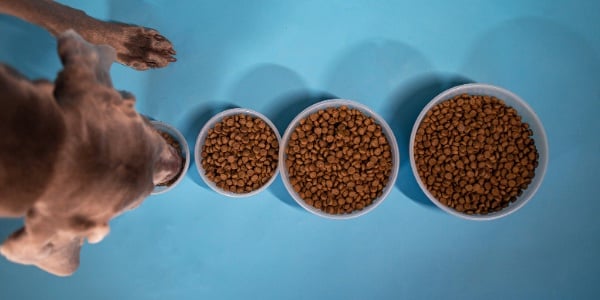 A cup is a cup, oh yup, oh yup, unless that cup is the cup my vet talks up! What in the world can this mean?
A cup is a cup, oh yup, oh yup, unless that cup is the cup my vet talks up! What in the world can this mean?
Depending on the situation, when we are asked or think about a cup, our answers will be very different.
When we think of a cup of coffee, especially if the morning is a bit rough, a cup better be the size of a soda bottle.
But if we think of a cup of espresso, we think of a tiny cup. Either way, we just think of a cup.
Why should this matter to you? It matters because when it comes to your dogs weight and their overall health, the myriad of empty containers people frequently use to scoop their pet's kibble aren't the cups we veterinarians (and the back of the pet food bags) are talking about.
This especially becomes a problem when a pet owner feeds the number of cups the pet food bag suggests something we will discuss later AND they are using the extra-large coffee cup variety. Let's look at how much food you should actually be feeding your dog, how often you should feed them, and ways to help cut the calories if your pet is overweight.
How Much Food Should You Feed Your Dog?
I feel I must get on my soapbox. We all look at the back of the food bag for the recommended feeding amounts. While this is a good start perhaps, we must keep a few things in mind.
First, the guidelines for feeding amounts are typically based on mature intact (not neutered) male dogs. Intact male dogs typically have a higher metabolism and can consume more calories than the average canine, especially a spayed or neutered one.
Second, the range for the weights for feeding is relatively wide on many food bag recommendations. For example, on my dogs food bag the first range is 312 lbs. One should never feed a 3-pound dog anything close to the amount a 12-pound dog would eat. Here's a photo example showing a range of guidelines from another Preventive Vet team member's dog's food notice how the range gets wider for larger dogs:
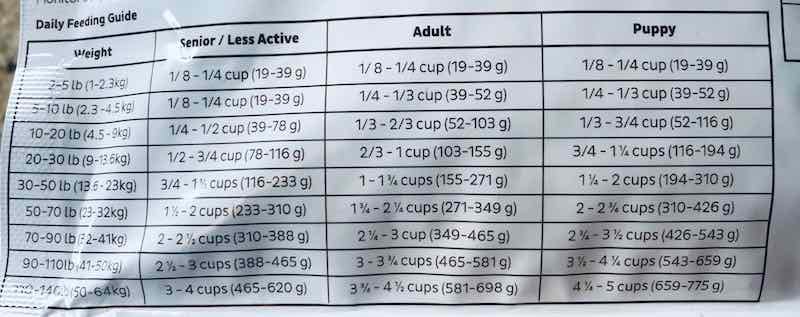
You should feed based on what the ideal body weight is for your pet. For example, if your dogs ideal weight is three pounds, start off feeding at the bottom of the range. Do not feed based on actual weight if your pet is overweight. If you find your pet is gaining weight at that amount, you may need to cut back on the amount of food (also be sure you arent giving too many treats better to cut those back than your pets main diet!)
Third, you must remember that each dog is an individual and their body structure and metabolism is unique to them. For example, dogs that are working dogs have a higher metabolism (more muscling and activity) and are burning more calories than a dog sleeping on the sofa. They need more calories to maintain weight. This is why there are performance diets designed to meet their needs, and as an owner of an athlete you will need to provide the needed calories for that lifestyle. Therefore, you must feed your dog based on your dogs uniqueness!
Wondering how many calories your dog needs? We've created a calorie intake calculator for dogs that will give you an estimate on their needed daily calories to give you a starting point. Click here to jump to the calculator below.
Another example is my small dogs bag of food suggests he should get 1 cup a day. My little porker is very lazy, hates walks, and loves food. Now granted, he gets plenty of treats for being a good boy, but I only feed him about cup of food per day. If he gets more, he gains a lot of weight. Excess weight on him could cause back and joint issues. By measuring his food or any other dogs food, I know what amount is enough for them to maintain weight. The best thing to do is consult with your veterinarian as to the proper amount of calories to feed your pet.
Using a Digital Scale to Measure Dog Food
As doctors always say, The scale dont lie! That is why measuring your dogs food by weight rather than volume is more accurate. While a measuring cup is great, we can always be off a little when we eyeball how much is in the measuring cup.
But when you know the weight of what you should feed your dog, you can be exact every time you feed with a digital scale. A kitchen scale can work, or consider using a handheld digital pet food scale like this portable and handheld one from Petfusion, which makes it easier to measure weight quickly or while on the go.
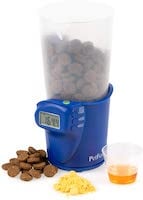 PetFusion Digital Pet Food Scale and ScoopBuy on Chewy | Buy on Amazon
PetFusion Digital Pet Food Scale and ScoopBuy on Chewy | Buy on Amazon
How Many Calories Does Your Dog Need?
Every dog is different in the number of calories they need every day to stay at a healthy weight. We've created a calorie intake estimate calculator below to help you determine a starting point (or "ballpark" estimate) for your dog's daily calories.
The result is based on your dog's activity level and current weight so it's important to think of this as just a starting point for your dog's daily caloric intake! Every dog's metabolism is different and influenced by a variety of factors that are near impossible to work into an exact calculation. Your dog may need more calories than the calculated estimate or they might need fewer calories.
Pay attention to your dog's body condition and discuss their ideal weight with your veterinarian to ensure they are maintaining a healthy weight.
This calorie counter applies to dogs that DON'T have special nutrient needs, such as growing puppies, pregnant or lactating females. Growing puppies and dogs who are pregnant or lactating need to have their weight monitored by their veterinarian.
Enter your dog's current weight and activity level in the calculator below
- Average Activity Level: 3060 minutes of exercise each day
- Inactive/Senior Activity Level: 1530 minutes of exercise each day; or over 7 years old
- Active Activity Level: 60120 minutes of exercise each day
Why Tracking Your Dog's Calories Matters
Why is measuring your pets food and knowing how many calories they're eating every day so important? Because the pet obesity rate in the U.S. (and in many other countries, too) has truly ballooned to epidemic proportions.
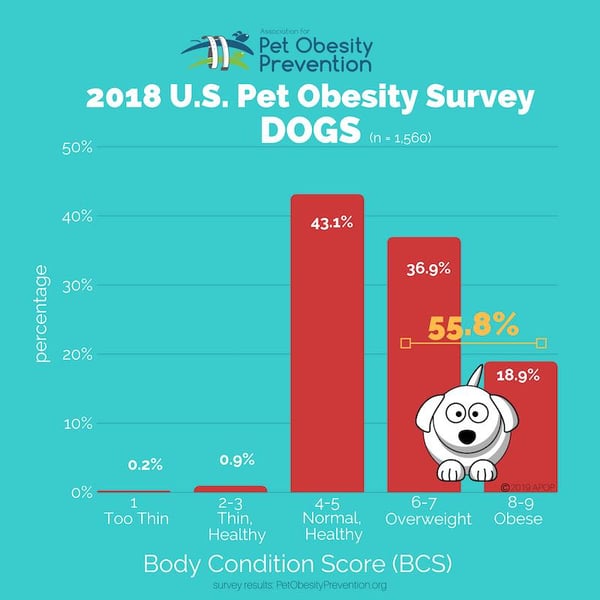 Obesity in pets contributes to other health issues such as osteoarthritis in dogs or potentially diabetes in cats. And while overfeeding a pet their regular food isnt the only contributing factor, it certainly is a big one and its typically easy to change.
Obesity in pets contributes to other health issues such as osteoarthritis in dogs or potentially diabetes in cats. And while overfeeding a pet their regular food isnt the only contributing factor, it certainly is a big one and its typically easy to change.
There are HUGE advantages to measuring your pets food. For one thing, your pet will be much healthier. Animals at ideal body weight are easier for your veterinarian to examine, and it also allows for more accurate bloodwork results. Additionally, since medications are based on weight, you not only have to administer less medication (that is especially nice with cats!), but you also save money.
While some medications are based on your pets exact weight because of how they are distributed throughout the body, others are based on your pets ideal body weight. If your pet is overweight or obese, your pets veterinarian has to make assumptions as to what their ideal weight is. Therefore they may be safe, by using a slightly higher weight than the true ideal of your pet. This can make a big difference in the cost of medications.
Typically, heartworm prevention and flea/tick prevention are more affordable for lower weights. Just a couple of pounds can be the difference between what dose your dog gets if they are on the borderline of two different sizes. Lastly, you will save a bunch of money on pet food because you are not overfeeding your pet and therefore not going through a bag or can of food as fast.
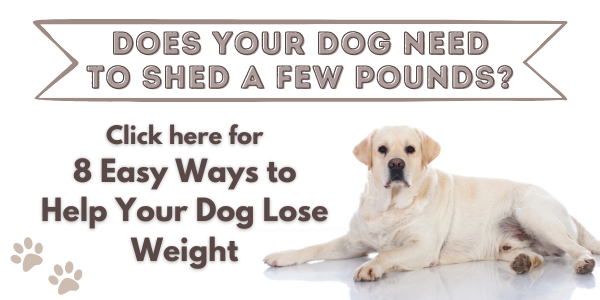
How Often Should You Feed Your Dog?
The answer to this question is dependent on your dogs age, size/ breed, activity level, and health issues. Below are general guidelines for how often to feed your dog, based on their age, size, or activity level. Note that there are some health issues that require more frequent feeding. Your veterinarian can advise you in these cases.
Remember the recommended feeding amounts on the back of your dog's food bag are for the total amount of food each day, not for each meal. Make sure to portion out this amount across your dog's regular meals.
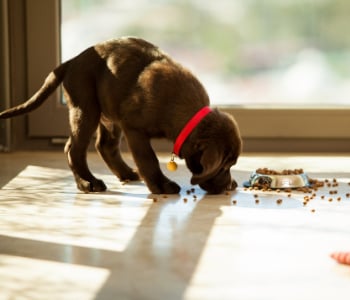 How Often Should You Feed Your Puppy?
How Often Should You Feed Your Puppy?
Generally, it is recommended to feed puppies every 68 hours (three to four meals a day). Puppies are more active and therefore need more calories. In addition, puppies usually need to use the potty about 1015 minutes after eating.
By sticking to a regular feeding schedule, it can help make potty training your puppy go faster and easier. Need an easy way to track your puppy's mealtimes and potty training schedule? Download this free Puppy Potty Log.
How Often Should You Feed Your Adult Dog?
Dogs over 5 months old should be fed every 812 hours. One main reason for this twice-a-day schedule instead of once-a-day meals is that stomach acid and bile can build up in your pets stomach. If your dog does not eat, they will become nauseated and vomit.
How Often Should You Feed Your Senior Dog?
Senior dogs need to be fed as often as adult dogs, so at least twice a day. However, senior dogs are fed a smaller amount because they are less active and do not burn as many calories. A senior-specific food formula is best, and it's always a good idea to consult with your veterinarian about what food and how much your senior pet should be eating to maintain a healthy weight. Speaking with your veterinarian is also important if your senior dog has any health issues.
How Often Should You Feed a Toy/Small-Breed Dog?
Certain breeds, such as Chihuahuas, or very tiny dogs, are often fed more frequently in a day. This is because they can become hypoglycemic (low blood sugar) and need food to keep their blood sugar up.
How Often Should You Feed a Large-Breed Dog?
Giant breed dogs usually need to consume more calories to maintain weight. But you dont want to overfeed at a single meal because this can increase the risk of GDV/bloat. For this reason, meals are spread out to two or three per day. Typically I do not recommend feeding more than 2.53 cups per feeding.
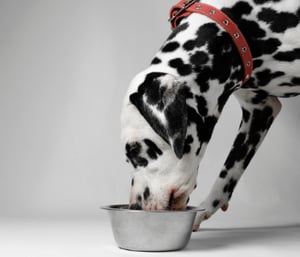 How Often Should You Feed an Active Dog?
How Often Should You Feed an Active Dog?
Dogs that are athletes or highly active typically need a lot of calories. As with giant breeds, you dont want to risk overfeeding at one single meal.
Athletic dogs sometimes need to be fed up to four times a day. In order to prevent the chance of bloat or other gastrointestinal issues, do not feed your athlete dog within two to three hours of activity.
Remember how important it is to measure your dogs food and feed them based on their best weight and body condition so that they have a long and healthy life.
If your dog needs to lose some weight, check out "8 Easy Ways to Help Your Dog Lose Weight" for tips on canine weight loss plus ways to avoid a "hangry" pup as you cut back calories!

